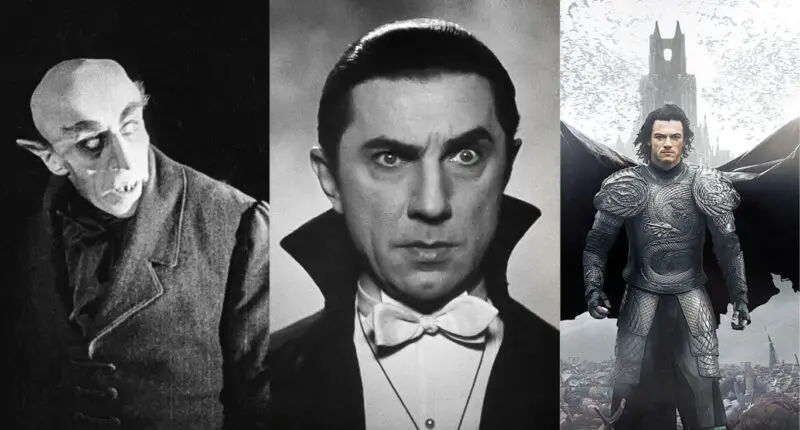Count Dracula is one of the most iconic figures in the history of horror literature and popular culture. First introduced in Bram Stoker’s novel “Dracula” in 1897, the character has since then undergone several transformations in various forms of media. From Bela Lugosi’s portrayal in the classic Universal monster movies to the more recent adaptations in TV shows and video games, Dracula has become a cultural phenomenon that continues to captivate audiences worldwide. In this article, we will explore the transformation of Dracula over the years and how this enigmatic character has evolved to suit the changing tastes and sensibilities of audiences.
Dracula’s Portrayal in Books and Literature

Dracula’s portrayal in books and literature has been both varied and influential. The character was first introduced in Bram Stoker’s novel “Dracula” in 1897 and was immediately recognized as a masterpiece of horror fiction. Stoker’s portrayal of Dracula as a menacing and seductive figure, capable of turning into a bat or a wolf, and with a thirst for blood, established the basic characteristics of the character that would endure in popular culture for more than a century.
Over the years, Dracula has been the subject of numerous adaptations, reinterpretations, and parodies in literature, ranging from serious literary works to pulp fiction and graphic novels. Some of the most notable examples include Anne Rice’s “The Vampire Chronicles,” Stephenie Meyer’s “Twilight” series, and the “Anno Dracula” series by Kim Newman.
Dracula’s influence on popular culture has been far-reaching, inspiring countless works of vampire fiction and helping to shape the modern conception of the vampire as a suave, charismatic, and alluring figure. From the gothic horror of the 19th century to the urban fantasy of the 21st century, Dracula continues to cast a long shadow over the world of vampire literature.
Dracula’s Adaptation into Movies and Television

Bram Stoker’s 1897 novel “Dracula” has been adapted into numerous movies and television shows since the early 20th century. The vampire Count Dracula has become a cultural icon and has been portrayed in various ways throughout the different adaptations. Here are some of the notable adaptations of Dracula into movies and television:
Movies:
Nosferatu (1922) – Directed by F.W. Murnau, this silent film adaptation of Dracula had to change the names of the characters due to copyright issues. However, the film remains a classic in the horror genre and the character of Count Orlok is considered one of the most terrifying portrayals of Dracula.
Dracula (1931) – Directed by Tod Browning, this film is the first to feature the iconic Bela Lugosi as Count Dracula. The film is considered a classic in the horror genre and established many of the tropes associated with Dracula.
Horror of Dracula (1958) – Directed by Terence Fisher, this Hammer Horror film starred Christopher Lee as Dracula and Peter Cushing as Van Helsing. The film was a critical and commercial success, and Lee’s portrayal of Dracula helped establish him as a horror icon.
Bram Stoker’s Dracula (1992) – Directed by Francis Ford Coppola, this film starred Gary Oldman as Dracula and was a more faithful adaptation of the novel. The film won three Academy Awards and was praised for its visual style and performances.
Hotel Transylvania (2012) – Directed by Genndy Tartakovsky, this animated comedy film features Count Dracula, voiced by Adam Sandler, as the owner of a hotel for monsters. The film was a commercial success and spawned a franchise, with three sequels and a television series.
Dracula Untold (2014) – Directed by Gary Shore, this film starred Luke Evans as Dracula and explored the origin story of the character. The film received mixed reviews but was a commercial success.

Television:
Count Dracula (1977) – This BBC mini-series starred Louis Jourdan as Dracula and was a faithful adaptation of the novel. The series received critical acclaim and Jourdan’s performance as Dracula was praised.
Dracula (2013) – This NBC series starred Jonathan Rhys Meyers as Dracula and was set in Victorian London. The series received mixed reviews and was cancelled after one season.
Castlevania (2017-2021) – This animated series, based on the video game series of the same name, features Dracula as the main antagonist. The series was critically acclaimed and ran for four seasons.
Dracula (2020) – This BBC/Netflix co-production starred Claes Bang as Dracula and was a three-part series. The series received mixed reviews but Bang’s performance was praised.
The transition and transformation of Dracula’s from the 60’s to 90’s
The portrayal of Dracula in movies and television underwent significant changes during the transition from the 1960s to the 1990s. Here are some of the notable trends and transformations that occurred:

From Horror to Comedy: In the 1960s, Dracula was primarily portrayed as a terrifying figure in horror movies, such as the Hammer Horror films starring Christopher Lee. However, in the 1980s and 1990s, there was a trend towards portraying Dracula in a more comedic light, such as in the film “Love at First Bite” (1979) starring George Hamilton and the animated series “Count Duckula” (1988-1993). This trend continued with the “Hotel Transylvania” franchise (2012-2021), which portrays Dracula as a lovable, quirky character.
From Gothic to Modern: In the 1960s, Dracula was often depicted in Gothic settings, such as castles or Victorian mansions. However, in the 1990s, there was a trend towards setting Dracula stories in modern times, such as in the film “Bram Stoker’s Dracula” (1992) directed by Francis Ford Coppola. This adaptation updated the story to a Victorian-era London, but included modern visual effects and a modern sensibility.
From Iconic to Character-Driven: In the 1960s, Dracula was often portrayed as a one-dimensional villain with limited characterization. However, in the 1990s, there was a trend towards portraying Dracula as a more complex character with inner conflicts and motivations. This is seen in “Bram Stoker’s Dracula,” which gives Dracula a tragic backstory and romantic motivations, and in the animated series “Castlevania” (2017-2021), which explores Dracula’s grief and anger over the death of his wife.
CONCLUSION
The transformation of Dracula over the years has been a fascinating journey, reflecting the changing values and cultural norms of society. From Bram Stoker’s iconic novel to its numerous adaptations in film, television, and literature, Dracula has taken on different forms and meanings that have both horrified and captivated audiences.
Throughout the years, Dracula has evolved from a monstrous villain to a complex character with a tragic backstory. From a symbol of fear and evil, he has become a representation of humanity’s struggle with mortality and the darkness within ourselves. The character’s ability to adapt to different eras and cultures while retaining its core essence is a testament to its enduring popularity.
Overall, the transformation of Dracula is a reflection of our society’s ever-changing values and beliefs, demonstrating how art can reflect and shape our perceptions of the world around us. As we continue to revisit this iconic character in the future, we can only wonder how Dracula will continue to transform and evolve with the times.
Also Read: 10 Most Deadly Vampires in DC Comics (DC Universe)



